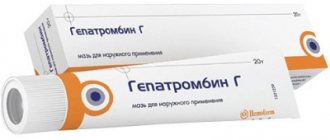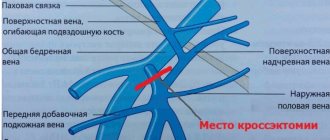Hemorrhoids are a disease that occurs in people of any age, but most often this problem is encountered by patients aged 35-55 years. The symptoms of the pathology are very unpleasant and cause significant inconvenience.
In the early stages, manifestations of the disease may cause minimal discomfort, but sooner or later an inflammatory process develops, which is accompanied by bleeding from the anus, burning and prolapse of nodes from the anus. Approximately every 10th person encounters these signs, and in the general structure of coloproctological diseases, hemorrhoids are in the leading position and account for up to 41% of all diseases of the colon.
The coloproctology department of the Federal Scientific and Clinical Center of the Federal Medical and Biological Agency of Russia provides highly qualified care for many diseases of the large intestine. The main emphasis in the treatment of hemorrhoids is on surgical interventions - high-tech operations are performed even in the most severe forms of the disease. Contact us for help, we will conduct a comprehensive examination, and, if necessary, remove hemorrhoids.
What is hemorrhoid surgery?
There are four stages of disease development:
- First stage. Characterized by bulging nodes and periodic bleeding.
- Second stage. The nodes increase, prolapses are added, but the nodes can be straightened yourself.
- Third stage. The nodes increase in size, prolapses are added, but the nodes can no longer be straightened on their own.
- Fourth stage. Constant loss of bleeding nodes.
In the initial stages of hemorrhoids, when the hemorrhoids are not very pronounced and do not cause significant discomfort, conservative treatment using tablets, rectal suppositories, and ointments is possible. In most cases, this method of treating nodes does not get rid of the root cause of the disease. For this reason, surgery is recommended for hemorrhoids.
Surgeons at our coloproctology department at the clinic of the Federal Scientific and Clinical Center of the Federal Medical and Biological Agency in Moscow use innovative, minimally invasive techniques when removing hemorrhoids. These methods are:
1. Infrared photocoagulation. This is a type of laser surgery, during which the leg of the node is cauterized. The high temperature of the laser radiation “evaporates” the tissue of the node, thereby eliminating the root cause of hemorrhoids - dilated veins. Our clinic uses equipment from the American company Reedfeed. The effectiveness of this technique in the treatment of hemorrhoids at an early stage is almost 80%, which is a very good result.
2. Sclerotherapy. This technology involves the introduction of a special sclerosant substance into the hemorrhoid. Due to their special chemical properties, these substances, when introduced into a node, cause collapse of blood vessels (veins) and their sclerosis (overgrowth), which is accompanied by a decrease in the volume of the node and prevents them from becoming inflamed in the future. The effectiveness of this technique is about 85%, with its help you can get rid of a maximum of 2 nodes at once.
3. Ligation with latex rings. With this method, a latex ring is placed on the stem of the hemorrhoid, which prevents blood circulation. As a result of a disturbance in the blood supply, a gradual death and subsequent removal of the weakened node occurs - after 1.5-2 weeks it disappears on its own, and in its place a small stump remains, which does not cause any discomfort to the patient. Our clinic uses latex rings and equipment for applying them from Kare Storze. The effectiveness of this method of treating hemorrhoids at stage 3 is 70%.
4. Cryodestruction. This technique for removing hemorrhoids involves freezing them with liquid nitrogen and subsequent destruction (used extremely rarely).
5. Desarterization of hemorrhoids or embolization of branches of the rectal artery. During this procedure, catheterization of the superior rectal artery is performed. Through a catheter, several Teflon balls up to 0.6 mm in size are introduced into the lumen of the specified blood vessel. These balls clog the small arteries that feed the nodes, resulting in their hardening. In this case, there is no need to remove the nodes themselves.
By wisely choosing one of the listed methods, you can help solve the problem for each patient. At the same time, the price for hemorrhoid removal in our clinic using minimally invasive techniques is affordable for any category of patients, and their use is preferable due to the lower number of complications.
Reasons for appearance
Hemorrhoids are dilation of the veins in the rectum, and it occurs due to stagnation of venous blood. Blood flow is disrupted for many reasons: this is a hereditary predisposition, weakness of the walls of blood vessels, a sedentary lifestyle, as well as other factors.
Dilated blood vessels put pressure on the walls of the rectum, causing it to be “pushed” out. Internal hemorrhoids do not cause discomfort until a certain time, although at this stage they are treated quite easily - you just need to restore normal blood circulation in the pelvic organs. Unfortunately, patients very rarely make an appointment with a proctologist even when pain occurs, and only a few undergo preventive examinations in the absence of complaints.
Internal hemorrhoids are detected using special equipment available to the proctologist. External nodes are clearly visible during the examination - sometimes patients can independently determine their presence. Their sizes range from a few millimeters to 2-3 cm in diameter. If there are too many of them, they can cluster into large affected areas. Because of this, not only the skin in this area becomes inflamed, but also all adjacent tissues. A severe form of hemorrhoids leads to the formation of blood clots in the vessels. In this sense, thrombosis is not an independent disease, but a serious consequence.
The lack of timely treatment leads to the fact that hemorrhoids begin to fall out, causing severe pain and trouble to the person. In this case, removal surgery is the only way to treat hemorrhoids. However, removal of nodes can be performed using different methods, which are determined by the doctor based on examining the patient and taking tests from him.
Methods of radical surgical treatment of hemorrhoids
Despite the existence of minimally invasive surgical methods for the treatment of hemorrhoids, classical radical hemorrhoidectomy or the Milligan-Morgan operation in various modifications remains in great demand. During it, a radical removal of the three main groups of internal nodes of the hemorrhoidal plexus is performed, as well as excision of existing external nodes.
The Milligan-Morgan operation is considered the optimal solution to the problem - it cures 100% of patients with stage 3-4 of the disease. However, many patients have questions: how much does this operation cost and why is it better than others? Note that the price for this operation for hemorrhoids is slightly higher, since the patient requires hospitalization in the department for several days. There are other types of hemorrhoidectomy: according to Longo, Parks, Ferguson. The doctor decides which operation to perform depending on the clinical situation.
During the surgical operation, our specialists use high-tech techniques, such as:
- ultrasonic or radio wave scalpel;
- laser installations;
- linear staplers for fabrics;
- Liga-Sure device.
By the way, the price of surgery for hemorrhoids does not change depending on what equipment the doctor uses - the specialist’s task is to perform an effective operation without complications in conditions of maximum comfort for the patient.
Possible complications
The operation, even with careful preparation, can lead to serious complications. This is due, firstly, to the technical complexity of the operation, and secondly, to the high risk of infection during the removal of hemorrhoids. If the requirements have been met, the patient may still experience the following problems:
- Suppuration. If a few days after the operation the wound festers, the patient is prescribed antibiotics and anti-inflammatory drugs.
- Fistula. A serious complication that develops only after a few months. A fistula is a channel between the wall of the rectum and an opening in the skin. Fistula is treated surgically.
- Bleeding. The cause of blood loss may be incomplete cauterization of blood vessels or tissue injury when suturing after removal of a hemorrhoid.
- Narrowing of the anal canal. It is the result of a medical error. The solution to the problem is to expand the anus with the help of special medical equipment; in particularly severe cases, plastic surgery is performed.
- Urinary retention.
- Rectal prolapse and weakness of the anal sphincter. Quite rare complications that occur when nerve endings are damaged during surgery. In mild cases, this pathology is treated with conservative methods; in more severe cases, surgical intervention is required.
- Psychological trauma. This is a very delicate operation, and also very painful, and many patients experience fear and depression.
How to prepare for hemorrhoid surgery
Preoperative examination includes an examination by a doctor and a number of laboratory and instrumental examinations, among which the following are mandatory:
- blood and urine tests (general);
- biochemical blood test;
- coagulogram;
- determination of blood group and Rh factor;
- blood test for antibodies to HIV and hepatitis viruses.
A few days before the planned date of surgery, the patient should adhere to a special diet with a minimum of foods that stimulate peristalsis. On the eve of the operation and 2-3 hours before it, you should do a cleansing enema. You should definitely tell your doctor if you are taking any medications; you should evaluate the possibility of taking them during and after surgery.
What is included in the cost of hemorrhoid removal surgery?
Treatment prices depend on several factors. Fundamental among them is the specific method of surgical intervention. How much a specific operation costs can be clarified during a consultation with a doctor, who will explain the features of a particular treatment method, warn about possible complications and talk about the features of the postoperative period.
The price includes a consultation with an anesthesiologist and pain relief. Our clinic uses all modern techniques, from local anesthesia to general anesthesia.
If there are indications, other coloproctological operations can be performed in our clinic, such as:
- excision of the epithelial-coccygeal tract;
- excision of perianal fissures;
- excision of rectal fistulas;
- rectopexy (surgery for colon prolapse) and many others.
Contraindications
• Surgery will have to be postponed for any acute illness or exacerbation of a chronic illness . • Severely obese are first advised to lose weight. • Hemorrhoids during pregnancy are treated conservatively, since there is a high probability of healing after the end of the child's feeding period. • Some relative contraindications may be: ___• blood clotting disorders; ___• colon oncology; ___• diabetes; ___• cirrhosis of the liver; ___• unstable angina; ___• recovery period after injuries, operations, etc.
Surgical intervention can be performed after stabilization of the condition and consultation with a medical specialist (cardiologist, endocrinologist, hematologist, hepatologist, etc.).
It must be remembered that only a doctor can assess the indications and contraindications and decide on the need for surgery. If you have questions about choosing a treatment method, be sure to consult a proctologist!
Postoperative period
Rehabilitation after removal of hemorrhoids is the most important stage in the patient’s life. After any operation, efforts should be made to prevent complications and accelerate tissue healing. In the postoperative period, we prescribe a protective regime, a strict diet and certain medications.
The following rules must be observed:
- hunger on the first day after surgery (drinking liquids is allowed);
- a diet that excludes foods with a gas-forming effect - prohibited: black bread, legumes, milk, cabbage;
- It is forbidden to eat pickled foods, pickles, spices;
- alcohol is excluded;
- the diet is enriched with fermented milk products, it is recommended to consume a large volume of liquid - at least 1.5-2 liters per day;
- heavy physical labor is limited for at least 3 weeks after surgery;
- careful personal hygiene is required.
If coloproctological diseases occur, contact the Federal Scientific and Clinical Center of the Federal Medical and Biological Agency of Russia in Moscow - we will help solve any health problems.
Information about the disease
- Hemorrhoids are one of the most common human diseases. More than half of the population has symptoms. They usually develop after age 30.
- Most often, a person who discovers symptoms does not seek specialized medical help for a long time and tries to treat himself.
- Pregnant women often experience symptoms of this disease, but they usually go away after pregnancy. However, some women may develop chronic hemorrhoids. In case of exacerbation of chronic hemorrhoids, specialized medical care is required.
- For any bleeding from the anus, it is very important to consult a specialist, since it can be caused not only by hemorrhoids, but also by other serious diseases.
- About half of the patients who visit a specialized medical facility to treat hemorrhoids have other diseases of the anorectal area, such as anal fissure, anal fimbria, or irritation of the perianal skin.
- Outpatient treatments are usually relatively painless.
- Only a small number of patients require surgical treatment of hemorrhoids; drug therapy and minimally invasive techniques are sufficient.










